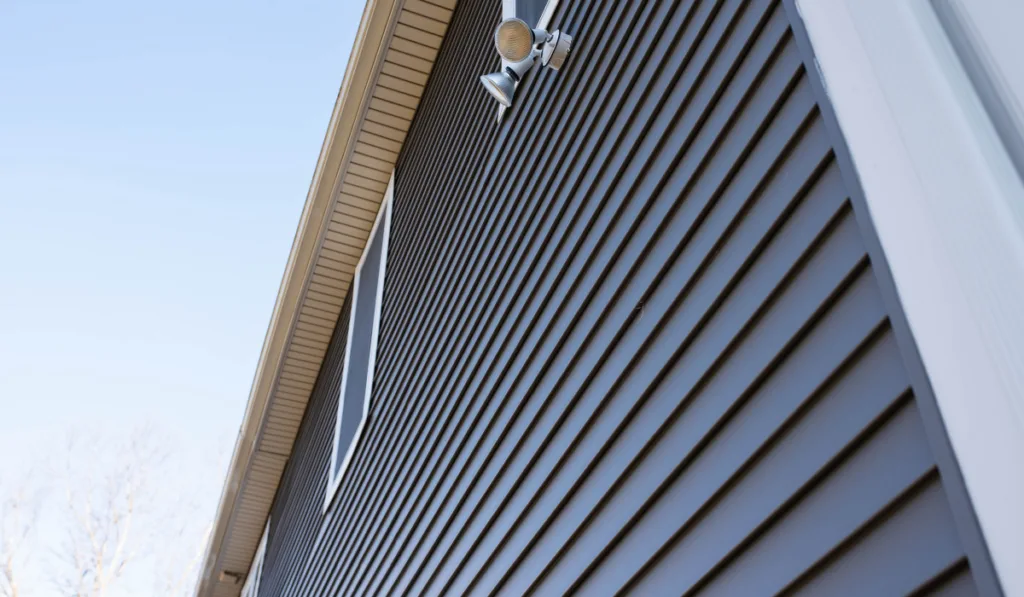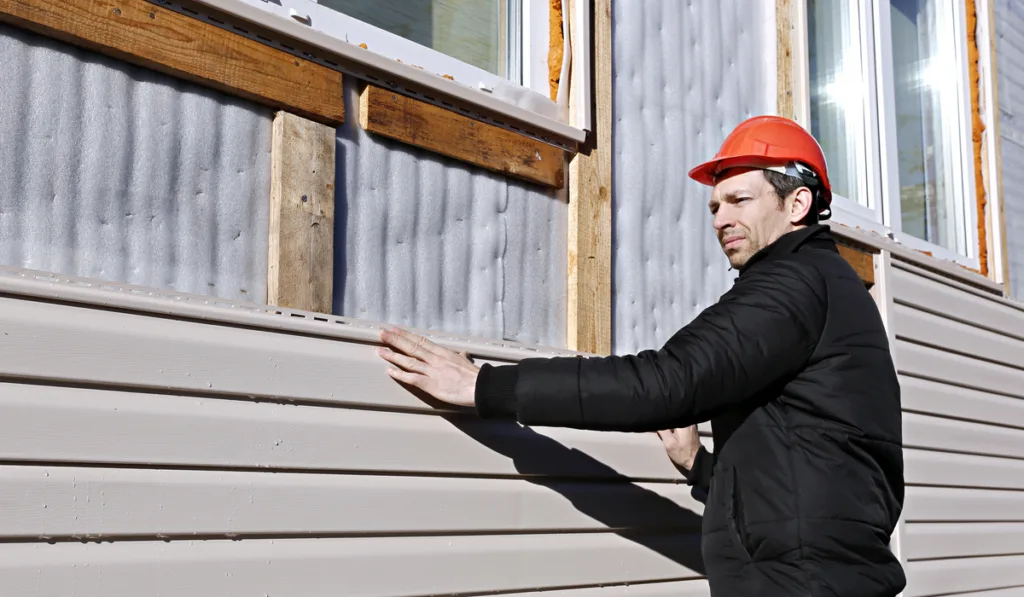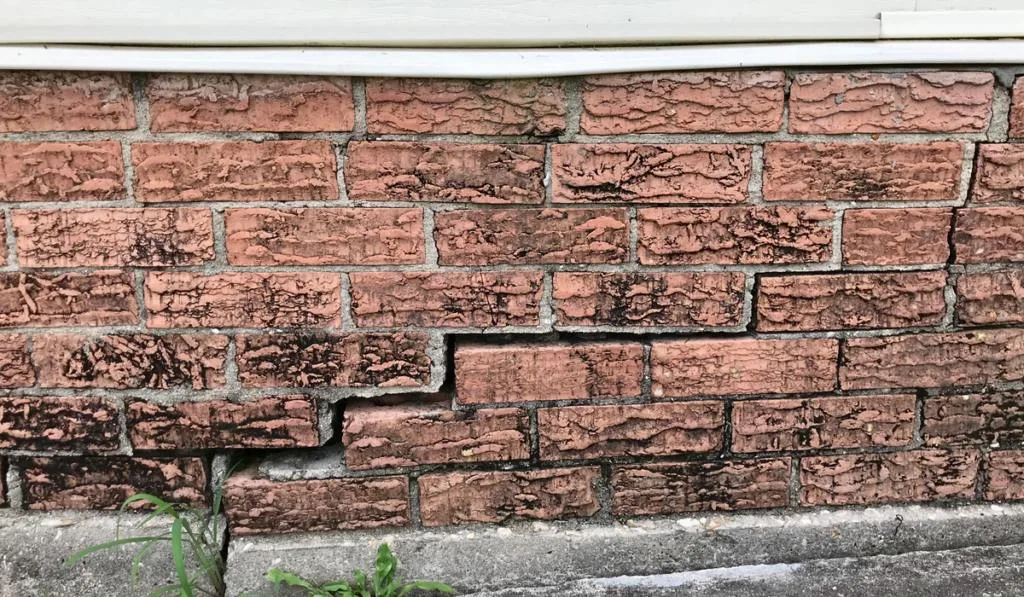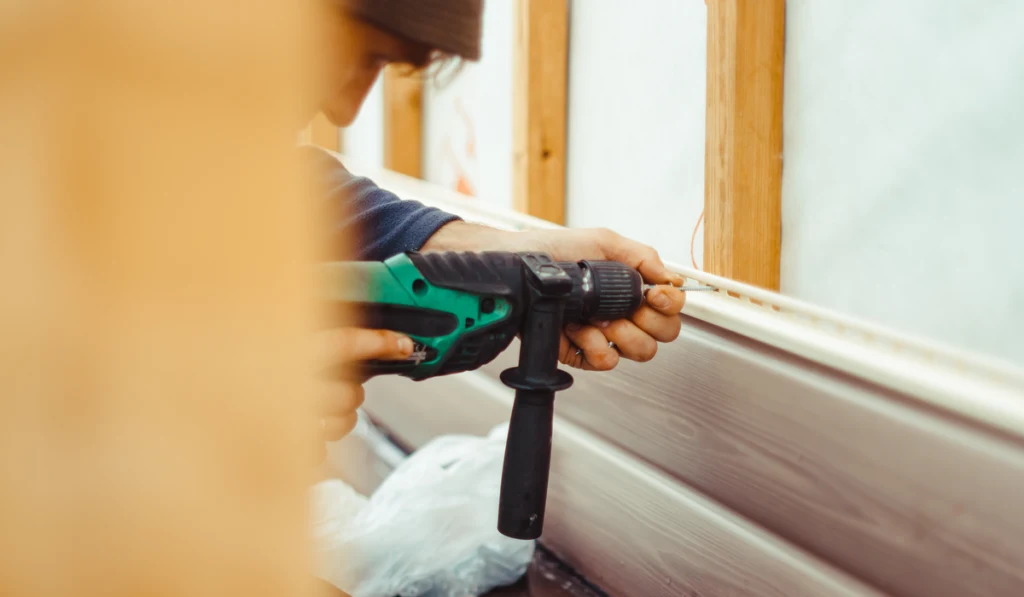*This post may have affiliate links, which means I may receive commissions if you choose to purchase through links I provide (at no extra cost to you). As an Amazon Associate, I earn from qualifying purchases. Please read my disclaimer for additional details.
Having a wavy surface takes the visual appeal out of your vinyl siding. Warping might also spell the start of deterioration for your siding. But why does this happen? Find out below.
Why does your siding look wavy?
There are many possible reasons why your siding looks wavy. One of them is installation issues. Apart from installation issues, your siding may look wavy because it is substandard, exposed to excessive heat, or your foundation settled.
Below, we go over four common reasons why your siding looks wavy. We also discuss how to fix the problem. So, read on for a way to repair your wavy siding.

Table of Contents
4 Common Reasons Why Your Siding Looks Wavy
The Siding Is Low-Quality
One possible reason why your siding is wavy is its quality.
If you buy low-quality vinyl siding, it will likely become wavy or warped afterward. In fact, the siding may already be mildly wavy when you buy it. But then, you may not notice this.
Low-quality vinyl sidings prone to warping are typically extra thin and too flexible. So, when buying your vinyl siding, look out for these.
Besides paying attention to the texture of the vinyl siding you opt for, check that the product has a certification from the Vinyl Siding Institute (VSI).
Fix
You cannot change the quality of low-quality siding. Also, you may be unable to straighten lengths that have already become wavy.
So, if your siding looks wavy because the material is low-quality, you must replace it.
Please do not leave the warped vinyl siding in place without replacing it. If you do, you may end up with worse structural issues.
For instance, leaving warped vinyl siding in place will promote moisture accumulation.
This, in turn, will cause mold and mildew to grow and cause rot. Of course, rot is not good for any organic materials in your structure.

Foundation Settlement
While this is not very common, foundation settlement is another possible cause of waviness in your siding.
Foundation settlement is a change in a foundation that causes a building to realign on the foundation. It occurs as a result of a reduction in soil air.
You could say foundation settlement happens because of a change in soil structure.
As we said, when foundation settlement happens, it causes the building to realign on the foundation. Various building parts will shift, bulge, or distort when this happens.
So, if your house settles on the foundation and the effect gets to your vinyl siding, it may become wavy.
Note that foundation settlement is more likely to happen in older homes than newer homes. Hence, its uncommonness.

Foundation settlement does not affect only vinyl siding. It may affect other types of siding too.
Whether wood siding, brick siding, aluminum siding, or fiber cement siding, foundation settlement may distort your siding.
There are two types of foundation settlement: differential settlement and uniform settlement.
Both of these are not good signs for your building. However, differential settlement is typically much more consequential than uniform settlement.
Nonetheless, whichever it is – differential or uniform – if you believe your house has settled on the foundation, get a professional to check things out.
Foundational settlement is a potential sign of severe structural damage, so having a professional assess the situation is the safest course of action.
On examining the building, the foundation engineer should be able to tell you the extent of the damage and what to do.
Fix
Foundation settlement is a sign of potentially serious structural damage. So, if the signs indicate that there may have been foundation settlement, get a foundation engineer on the job.
Replacing the warped siding, in this case, will not cut it.
Installation Issues
Perhaps the most common reason why vinyl siding becomes wavy is installation issues.
Installation issues are more common when people decide to DIY. So, if you installed your vinyl siding, there’s a chance that the warping came from you.
While installing your vinyl siding, the siding may become wavy if the nailing is too firm or not placed correctly. Also, your vinyl siding will warp if you do not put the panels in an ideal spot.
Siding Placement
When laying the panels of your vinyl siding, you must place them in a way that will allow some movement. This is vital because vinyl siding expands and contracts as the temperature changes.
With elevated temperatures, vinyl siding expands, and when the temperature drops, it contracts. If there is no space for some free movement when the panels expand, they will bulge, warp, and become wavy.
Placing siding panels without enough space next to windows or similar spots will restrict their movement. So if the wavy siding is installed between tight spots, the problem might be panel position.
In other words, if your siding is only wavy where the panels have no freedom to move, the issue comes from the position of the panels.

Nailing Technique
As with panel position, nailing your vinyl siding too firmly can restrict its movement. As said earlier, vinyl siding expands and contracts with temperature changes.
When the panels expand, they need to spread out. If they don’t, they’ll become warped.
Driving nails into your vinyl siding too tightly will restrict the movement of the siding. So, when the temperature rises and the siding expands, it will fold and become wavy instead of straightening out.
If you are unsure whether you nailed the siding too tightly or not, you could try moving it.
If your siding moves from side to side with some freedom, the nails are probably not too tight. But if it does not budge, the nail is too tight for sure.
If you do not place the nails as you should, you will have the same installation issues.
In other words, if you stick the nails in the wrong spot, your vinyl siding will not be able to expand and contract as it should. Consequently, it will start looking wavy.
Vinyl siding comes with an upper side with an oval or oblong opening.This upper side is where you should nail the siding onto your building.
Also, when nailing into the upper side of the vinyl siding, ensure the nail goes in straight.
Letting the nail tilt to the side will leave the siding with little or no room for movement. Of course, this will lead to warping.
Fix
If your vinyl siding has become significantly wavy due to an installation issue, you must replace it. However, you could reinstall it if it is only mildly wavy or not even wavy yet.
If the nails are too tight, loosen them. Create an expansion gap if the vinyl siding is in a spot that restricts its movement.
If you did not correctly place the nails in the siding, you would have to replace the siding. Nailing the panels again will leave you with nail holes that will make your siding unappealing and let water in.

Exposure to Extreme Temperature Variations
As we hinted earlier, vinyl siding expands and contracts in response to changes in temperature. When it is hot, vinyl siding expands; when it is cool, it contracts.
Your vinyl siding is more likely to become wavy if you live in a place with extreme temperature variations.
The temperature fluctuations will throw your siding into a regular cycle of contraction and expansion.
At the start, your siding will be able to retain its proper form when the temperature normalizes. But eventually, it will lose that ability and start sagging. When your vinyl siding starts sagging, it will look wavy.
Besides the weather in your area, placing a heat source near your vinyl siding might cause warping.
Having something like a grill stand close to your home exposes the vinyl siding to intense heat. Unfortunately, the heat from the grill will cause the siding to expand, warp, and possibly melt.
Apart from a grill, if there’s any item around reflecting sunlight onto your siding, you may see the same results.
The color of your vinyl siding is another temperature-related cause of warping. Generally, if your vinyl siding has a dark color, it is more likely to warp.
Why?
Well, darker colors absorb heat better than lighter colors. So, if your vinyl siding is dark, it will absorb more heat, expand, and become wavy.
If you repainted your vinyl siding with a dark color before the signs of warping showed up, the color is most likely the cause.

Fix
If your vinyl siding is wavy because of extreme temperature variations, you must replace it.
If the extreme temperature variation is climatic, creating some shade for the new siding can increase the siding’s lifespan.
If you have a heat source close to your vinyl siding, move it far away before replacing the warped siding. Also, if your vinyl siding is dark, ensure the replacement has a brighter color.
Another fix is to replace the vinyl siding with temperature-resistant siding like aluminum siding and fiber cement siding. You do not have to worry about the effect of temperature changes on those siding types.
